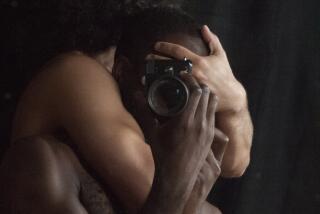DECOR : Photos Change Composition of Art World
- Share via
Once an unorthodox choice for formal living spaces, black-and-white and color photographs are increasingly given pride of place.
“Since the mid-1980s, the number of people buying photography to enhance their decorating has grown significantly,” says Robert Persky, founding editor of the Photograph Collector, a monthly newsletter in New York. “There are over 600 galleries in the United States selling photography, compared to a handful 10 years ago.”
In addition, the number of art photography courses in colleges and universities has increased in the past 15 years.
“Photography used to be a hobby,” Persky says. “Nowadays, everyone who goes to college knows that photography is part of the art world. So they can accept a photograph as art as naturally as they would accept an oil painting.”
Photography also has become more decorative, with a wide range of sizes and intense colors, Persky says, adding that “the majority of art photography today consists of large-format color images.”
Art photography is similar to graphic art in that both can be produced in multiples. Like graphic art, many photographs are sold in limited editions. As a limited edition, a photograph falls under art multiples laws such as those in New York and California that require a disclosure statement indicating how many copies will be made.
Today, a photo may be limited to five or 10 prints, especially in the larger format. Generally they are numbered by the photographer and authenticated by the gallery receipt. Once the maximum number of copies has been made, the negative is retired or destroyed.
Denise Miller-Clark, director of the Museum of Contemporary Photography in Chicago, says art photography is more affordable than contemporary paintings and “on a par or only slightly more expensive than collectible graphics.”
There are a number of sources of information for collectors. Publications such as the Photograph Collector report on news of the collecting world, auctions and new books and occasionally feature profiles of collectors.
The Museum of Contemporary Photography sponsors collectors’ group activities such as museum receptions, visits to private collections and talks by artists.
The museum also maintains the Midwest Photographers Project Print Study Room, a library of photographs and slides by 200 Midwestern artists. Visits are by appointment, and prices range from about $200 to $1,500, plus a commission used to further the program.
Miller-Clark is an avid collector. She says she hangs photographs in nearly every room of her suburban Chicago home, even the laundry room and bathrooms.
She plans to hang a photo mural of the sky in a recessed ceiling in her dining room. The installation will mimic the painted ceiling, a longstanding art tradition.
Miller-Clark also plans to put old photo images on sliding window panels. Using a silk-screen process, a technician can reproduce a photographic image onto a sheer or opaque fabric; the fabric can then be used in a variety of ways, from banners to window curtains to free-standing or wall-mounted panel screens.
Complex methods are fine, but simplicity often is best for displaying art photographs. And for the avid collector, rotating the display is ideal. One method is to stand framed photographs against the wall on wooden ledges mounted at waist- or shoulder-height. One source for ready-made ledges is Exposures, a photographic accessories catalogue ([800] 572-5750).
More to Read
The biggest entertainment stories
Get our big stories about Hollywood, film, television, music, arts, culture and more right in your inbox as soon as they publish.
You may occasionally receive promotional content from the Los Angeles Times.










